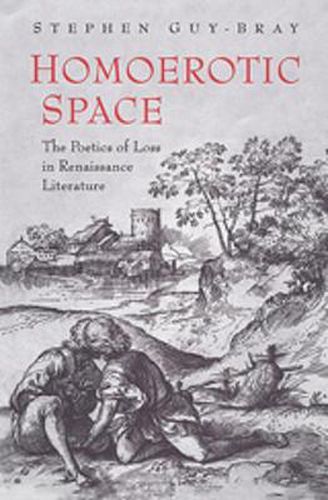Readings Newsletter
Become a Readings Member to make your shopping experience even easier.
Sign in or sign up for free!
You’re not far away from qualifying for FREE standard shipping within Australia
You’ve qualified for FREE standard shipping within Australia
The cart is loading…






Sexual politics in the Renaissance dictated a strong opposition to any kind of homoerotic attachments, or discussion thereof, forcing Renaissance poets and playwrights to find other means of representing these connections. In this compelling and intriguing work, Stephen Guy-Bray argues that early modern authors used renditions of Theocritan and Virgilian pastoral, as well as epic poetry, for the exploration and the allusive presentation of homoerotic and homosocial themes.
Drawing on the poetry and plays by such authors as Castiglione, the Earl of Surrey, Milton, Spenser, Barnfield, William Browne, Shakespeare, and Beaumont and Fletcher, Guy-Bray investigates how some authors used these classical models to represent homoeroticism, while others found the inherent homoeroticism of these poems to be problematic. Discussing both content and form of Renaissance and Classical literature, Guy-Bray’s work engages in an important and frequently heated debate about the history of homoeroticism as well as questions of literary history and the interpretation of texts.
$9.00 standard shipping within Australia
FREE standard shipping within Australia for orders over $100.00
Express & International shipping calculated at checkout
Sexual politics in the Renaissance dictated a strong opposition to any kind of homoerotic attachments, or discussion thereof, forcing Renaissance poets and playwrights to find other means of representing these connections. In this compelling and intriguing work, Stephen Guy-Bray argues that early modern authors used renditions of Theocritan and Virgilian pastoral, as well as epic poetry, for the exploration and the allusive presentation of homoerotic and homosocial themes.
Drawing on the poetry and plays by such authors as Castiglione, the Earl of Surrey, Milton, Spenser, Barnfield, William Browne, Shakespeare, and Beaumont and Fletcher, Guy-Bray investigates how some authors used these classical models to represent homoeroticism, while others found the inherent homoeroticism of these poems to be problematic. Discussing both content and form of Renaissance and Classical literature, Guy-Bray’s work engages in an important and frequently heated debate about the history of homoeroticism as well as questions of literary history and the interpretation of texts.